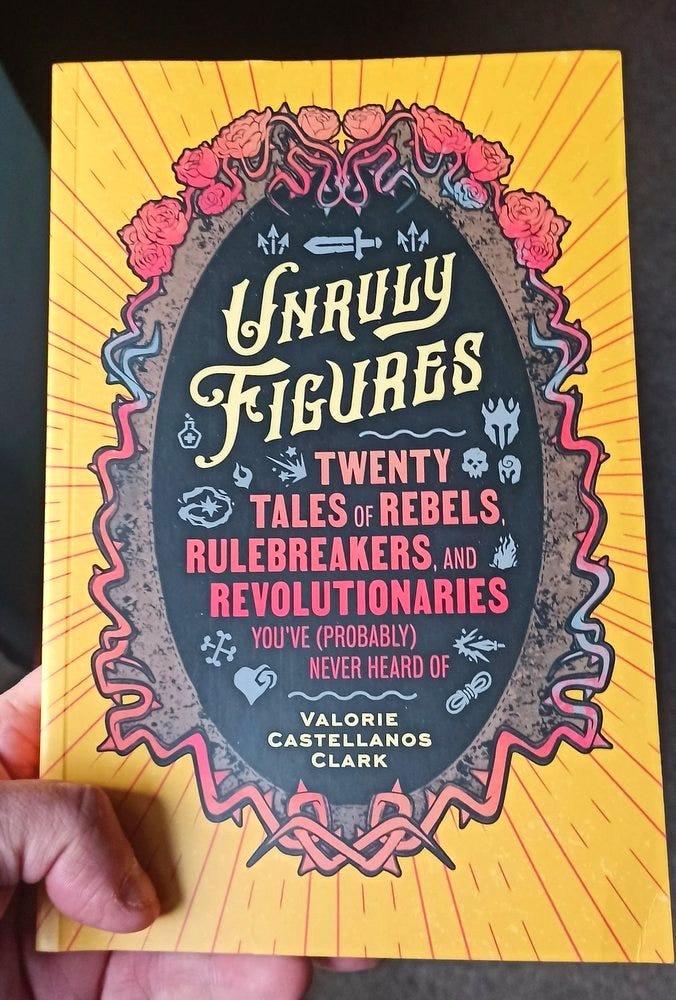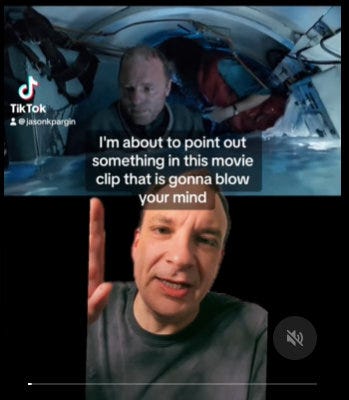How To Live With A Worm In Your Ear
Why the Spice Girls have a lot to answer for.
Hello! This is Everything Is Amazing, a newsletter about science, curiosity, wonder and weird things in the sky that only sort of exist.
It’s been a while! Much longer than I planned - apologies for that. (Part of the reason was repeat visits to the hospital to investigate some lingering mystery-ailments that started giving me a kicking a couple of months ago, which could be a mild touch of the long COVIDs. But all should be well.)
During this time, around 32 million of you got to see one of the most incredible sights of the natural world, which Scientific American’s Megha Satyanarayana described as being “engulfed by the most joyous solitude.”
On August 12th 2026, we folk on the western edge of Europe will be able to enjoy the next one, when the path of totality will sweep down the east coast of Greenland, clip the edge of Iceland and descend upon northern Spain, where I plan to intercept it with appropriate eyewear.
I’ll also be putting away my phone, in agreement with Phil Plait here:
“You may be flooded with joy, wonder, awe, a numinous sense of majesty or any of a dozen other emotions. Your reaction is personal and deserves to be your own. This is what makes the eclipse such a special phenomenon to us. Don’t interfere with your interaction with it! Let it happen and you’ll experience a profundity that will stay with you far longer than any memory reflected in a photograph.
Be there. You won’t regret it.”
And I’ll be waiting for one special moment, when the blazing edge of the eclipsed sun appears to clump together like beads of rain on a spider’s web:
This was first formally explained by astronomer Sir Francis Baily in 1836, it’s the reason for that heartbreakingly gorgeous “diamond ring” effect - and it’s because the rugged topography of the Moon’s surface is momentarily blocking some of that light.
In other words, for just a few seconds, you’re watching sunlight streaming through the mountains of the Moon (or near as dammit, depending on which terrain happens to be positioned edge-on at that particular moment).
The mountain-obsessed ex-travel-writer in me - and the one that desperately wants to see ground-level photos of all the biggest mountains in our Solar System before I stumble off this mortal coil - just cannot get this out of my head. What a thing. Let’s hope this doesn’t end with me attempting poetry.
(As for eclipse photos on the internet, I hope you’ve been as entranced as I have - but I think my favourite is the one at the bottom of this newsletter, which took over a year of planning!)
Secondly: congratulations to Valorie Clark of the terrific Unruly Figures, because the book of her newsletter is now out in the world and it’s a magnificent thing indeed:
That’s me holding my copy. You can get yours here.
Finally, a follow-up to a previous edition of Everything Is Amazing.
You may remember that ages back, we looked at the real-world facts behind James Cameron’s 1989 film The Abyss, including the recent suggestion that it may be possible for us to (sorry about this sentence, but that’s the science) ‘breathe’ through our rectums:
Gulp! The Science Of Breathing Liquid
"As one of the characters in The Abyss points out, every human being who ever lived has done it - including you and I: “We all breathe liquid for nine months, Bud! Your body will remember.”
It’s a weird thing to think that our bodies don’t exactly need the air we breathe. They absolutely need the oxygen it contains - but as long as that oxygen gets into our bodies somehow, that should be enough to keep us alive."
I thought that was my favourite new thing I’d learned about one of my favourite films. But over on Threads (posted over from his TikTok channel), Jason Pargin - author of John Dies At The End - discovered something incredible.
It’s a mistake made during the film’s most dramatic scene that is so glaringly obvious that it’s impossible to un-see once you know it’s there, which has nevertheless escaped detection by millions of people for the last 35 years:
Click on the above image to go watch it. (And yes, it’s absolutely real: the full scene is here if you want to check.)
As Pargin says: James Cameron must have seen the mistake in the editing room, yet made the decision to use that footage anyway, figuring that nobody would notice because our attention is so utterly gripped by what the actors were doing. And he was right! That’s knowing your craft, right there.)
(And if you’ve never seen The Abyss and you’re certain that you wouldn’t have fallen for it, I dare you to take this famously unsettling awareness test.)
Okay! For today’s main course, we’re returning to this season’s look at the science of memory, on the heels of this investigation into the unusual memory-making power of writing everything down.
This series is mostly concerned with tips on making your memory better - but what happens when it’s working too well?
And why is it that the thing you’re usually least able to get out of your head is the most excruciatingly annoying song you’ve heard all year?
We’ll get to that! But first, it’s time for me to show you my personal musical superpower (which I’ve known about for decades but never known the name of until now) by whistling something to you.
Ready?





